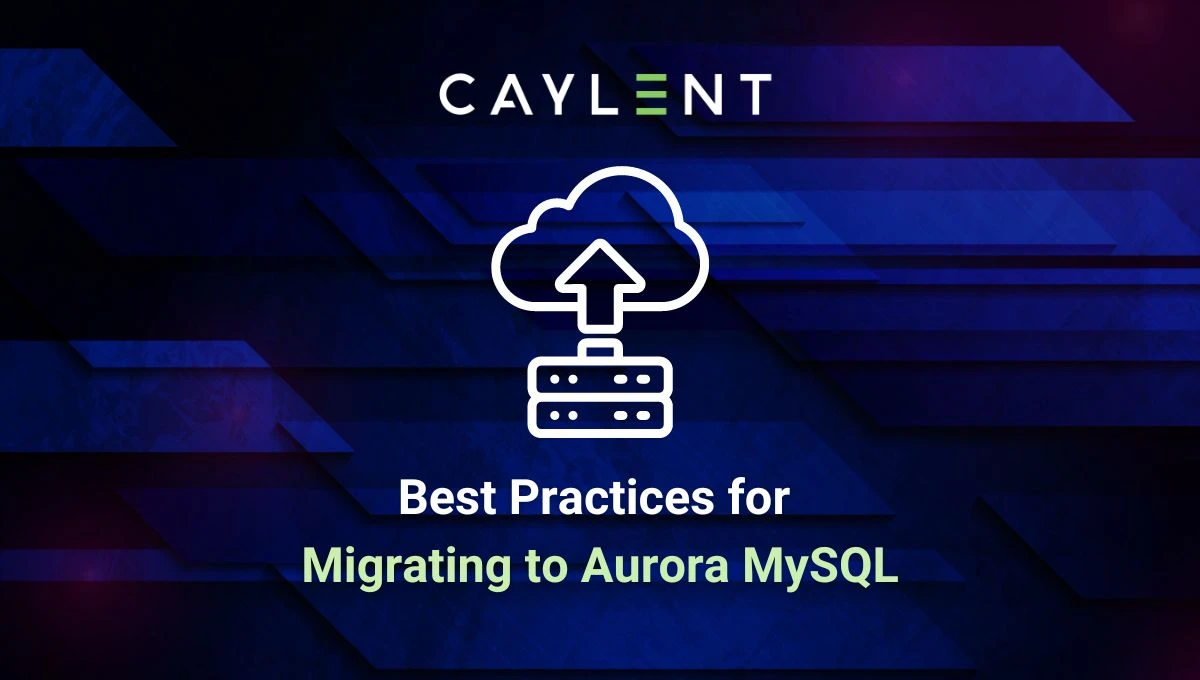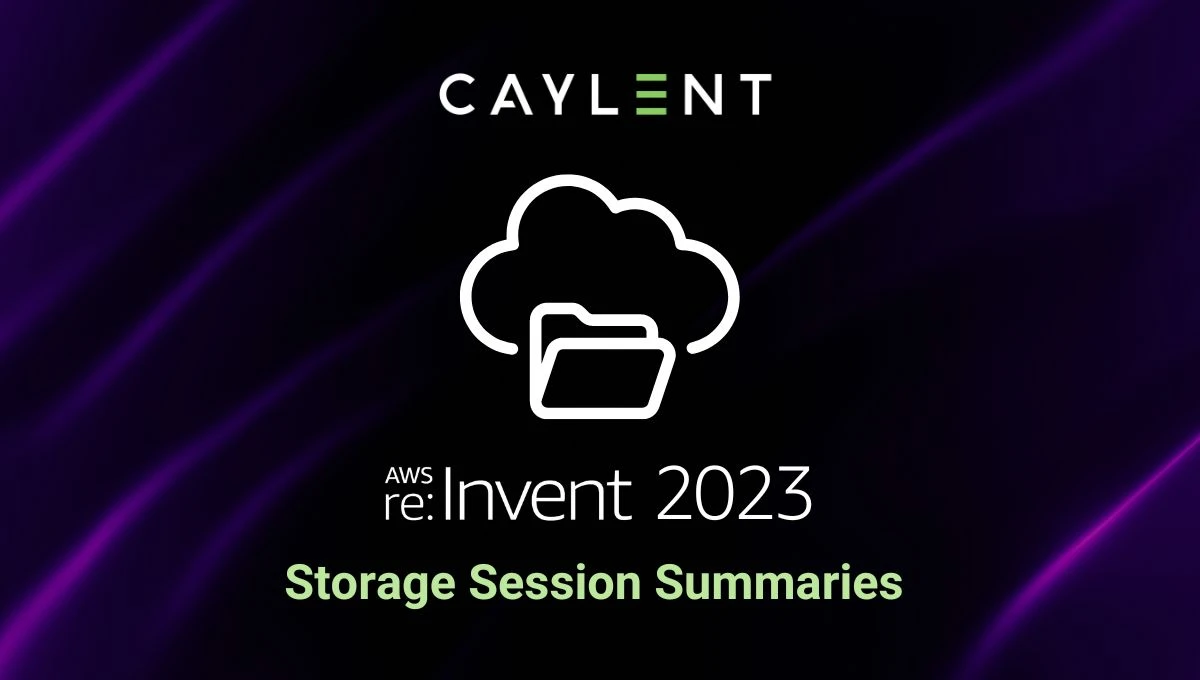
Caylent Services
Data Modernization & Analytics
From implementing data lakes and migrating off commercial databases to optimizing data flows between systems, turn your data into insights with AWS cloud native data services.
Modernizing your applications on the cloud can offer significant efficiency advantages, saving you costs while improving security and end user experience. Read about the different paths to data modernization and how they can help you meet your goals.
As enterprise businesses grapple with mounting technical debt, vendor lock-in and siloed data, it’s clear that data modernization efforts must begin in order to keep pace with disruptive cloud native startups. This is particularly apparent in traditional industries like financial services, healthcare, life sciences and retail.
These businesses often grow through acquisition and in many cases, such companies struggle to have visibility into all of the applications and databases in the environment. The prospect of how to begin modernization efforts can be overwhelming, even when there is buy-in at all levels of the organization.
While the day-to-day frustrations may be top of mind as business leaders try to mine databases for reports and insights, what often goes unrecognized is the fact that decades of historical data is sitting there waiting to propel them past the competition.
These businesses may have even looked into data modernization several years ago, but the time and monetary commitment wasn’t palatable. However, cloud native services have become incredibly sophisticated and allow this process to accelerate exponentially, at a greatly reduced investment, over the solutions available only a few short years ago.
“The door is wide open for teams just adopting data modernization, there's no reason to think that you're so far behind that you can't possibly catch up. Massively scalable cloud native services, coupled with cheaper storage and compute, mean you no longer have to make difficult decisions around which data to prune. Managed cloud data solutions allow you to quickly ask simple questions of your data before investing in the people and skills needed to glean deeper insights and actions from your data.”
- Ross Lawrie, Director, Customer Solutions Architecture
While enterprises may have been in the process of doing their research and planning to embark upon a data modernization effort, several factors are colliding to contribute to the perfect storm—causing these efforts to transition from a must-do to a must-do now.
The 2020 pandemic caused two seismic shifts to take place, competition coming from startups and the way consumers want to consume products.
According to the US Census Bureau, after an initial dip in startup creation as lockdowns began, the rate with which startups were being created grew nearly 67%. Many of these startups aimed their sights squarely at toppling the status quo. They recognized early on that consumer behavior would be disrupted as a result of remote working, safety concerns and a new expectation of convenience in the way products were acquired and consumed.
“The pace of modern business has increased substantially, while computing power has increased exponentially. Businesses can no longer spend weeks or months integrating disparate structured data sources, only to have the schemas or requirements change in the middle of the project. Agility in dealing with wider varieties of structured and unstructured data sources, along with vastly increased volumes, requires new tools and new skills. While cloud native businesses are springing up daily, legacy businesses have the advantage of years of historical data from which to generate insights.”
- Mark Olson, VP of Customer Solutions
As the pandemic continued on, consumers came to expect convenience and speed—no longer satisfied or comfortable with the inconveniences they brushed off pre-pandemic. And as we round up to nearly four years of our not-so-new normal, habits and behaviors of many of these customers are now permanently changed.
Meanwhile, cloud native services have proliferated both in sheer numbers of services and the sophistication and cost efficiency with which they can help businesses modernize legacy applications and databases. At the same time, enterprise businesses are dealing with increased costs—a problem that only increases annually as these databases and applications age and go out of support.
As businesses pivot to become a data-driven organization, there are generally four main ways to approach modernization.
This is a traditional approach to data that is updated for the cloud. Most enterprises have a large collection of relational database systems and likely at least one data warehouse. Large ETL jobs are used to extract data from operational data stores, denormalize the data into dimensions and store it in a data warehouse. Reports are then generated out of the data warehouse on a periodic basis and used by executives to make business decisions.
In an on-premise environment, maintaining these systems requires a large IT team. This team needs to constantly update and patch operating systems, database systems and all of the associated hardware and network infrastructure.
With today’s modern cloud environments, equivalent systems can be easily built without the heavy burden of maintenance. Using PaaS tools such as Amazon RDS, Amazon Glue and Amazon Redshift, configuring an equivalent, low-maintenance cloud environment is achievable with significantly lower IT and maintenance costs.
Enterprises already have vast amounts of unstructured data just waiting to provide key insights into their business. These can come in the form of emails, social media posts, documents, images and spreadsheets. Because all of this information doesn’t present itself in a traditional relational structure, it requires a different form of storage and processing.
A data lake, built on top of Amazon S3, is a perfect place to store and organize this type of information. Once a data lake is built, data ingestion services, such as Amazon Managed Streaming for Kafka or Amazon Kinesis, can be used to bring files in and out of the data lake at incredible volume and speeds.
Having all of this data available, Amazon EMR (Elastic MapReduce) allows for efficient processing of this vast amount of data directly into an insight engine. It’s also possible to use Amazon Athena inside of your data lake using traditional techniques such as SQL queries.
Machine Learning (ML) is fundamentally a way of recognizing formerly unknown patterns in data or of quickly identifying known patterns in data that has never been seen before. The mathematics behind ML have been around since the turn of the century, but only recently have we had the computational power and storage capacity to implement these models in the real world. Although AI has been quite the buzzword in the past few years, general artificial intelligence has not yet been demonstrated.
Enterprises tend to believe that harnessing the power of ML requires a large team of data scientists to build custom learning models. However, recent advances in tools like Amazon SageMaker have significantly lowered the barrier to entry for typical business use cases.
Data that can be structured in a spreadsheet or relational database table can easily be turned into a predictive model using Amazon Sagemaker Autopilot. In addition, while there are still complex use cases that require a team of data scientists, many common applications of this technology (such as text recognition, image recognition, voice generation, etc.) have been modeled by Amazon and packaged behind easy to consume web APIs such as Amazon Rekognition, Amazon Textract and Amazon Polly. There are many paths to achieving business value from machine learning without requiring a team of data scientists.
Once organizations have used one of the preceding methods to achieve actionable insights, tools like Amazon Quicksight allow you to visualize your data in a more consumable format than tables and reports. These tools also give you the ability to slice and dice your data output to derive even deeper insights into the business and drive strategic decision making.
Our Data Modernization on AWS eBook outlines tips to achieve these paths, how to overcome common challenges and the competitive advantages of data-driven insights.
“The companies that have made years of investments in their data tools, services, and people have some investments to make to bring it up to speed and adopt some of these modern tools and concepts. But at the same time, if a company hasn't made those inroads yet, they are not as far behind as they might imagine because the technology has caught up to the point where they could modernize very, very fast.”
- Jeremy Bendat, Director of Business Development
The idea that "data is the new oil" doesn't go far enough. With a modern data ecosystem, enterprise data can be reused, repurposed, combined, enriched, and otherwise mined to create sustainable competitive advantages. Now is a great time to start taking advantage of untapped or underutilized potential in legacy data assets.
Whether you're just beginning to explore cloud-native data services or have already migrated to AWS and need help optimizing your data infrastructure and pipelines, our experts work closely with your team to create a tailored roadmap that aligns with your business goals and unique requirements.
Our data modernization and analytics capabilities on AWS include:
Are you interested in learning how we can help you with your data goals? Get in touch with our team!


Caylent Services
From implementing data lakes and migrating off commercial databases to optimizing data flows between systems, turn your data into insights with AWS cloud native data services.

Caylent Services
Apply artificial intelligence (AI) to your data to automate business processes and predict outcomes. Gain a competitive edge in your industry and make more informed decisions.


Get up to speed on all the GenAI, AI, and ML focused 300 and 400 level sessions from re:Invent 2023!

Aurora MySQL is a high-performance, fully managed database with Amazon RDS benefits, simplifying infrastructure for business focus. Learn migration best practices and essential components for a successful journey toward Aurora MySQL that can lead to increased scalability, resiliency, and cost-effectiveness.

Get up to speed on all the storage focused 300 and 400 level sessions from re:Invent 2023!